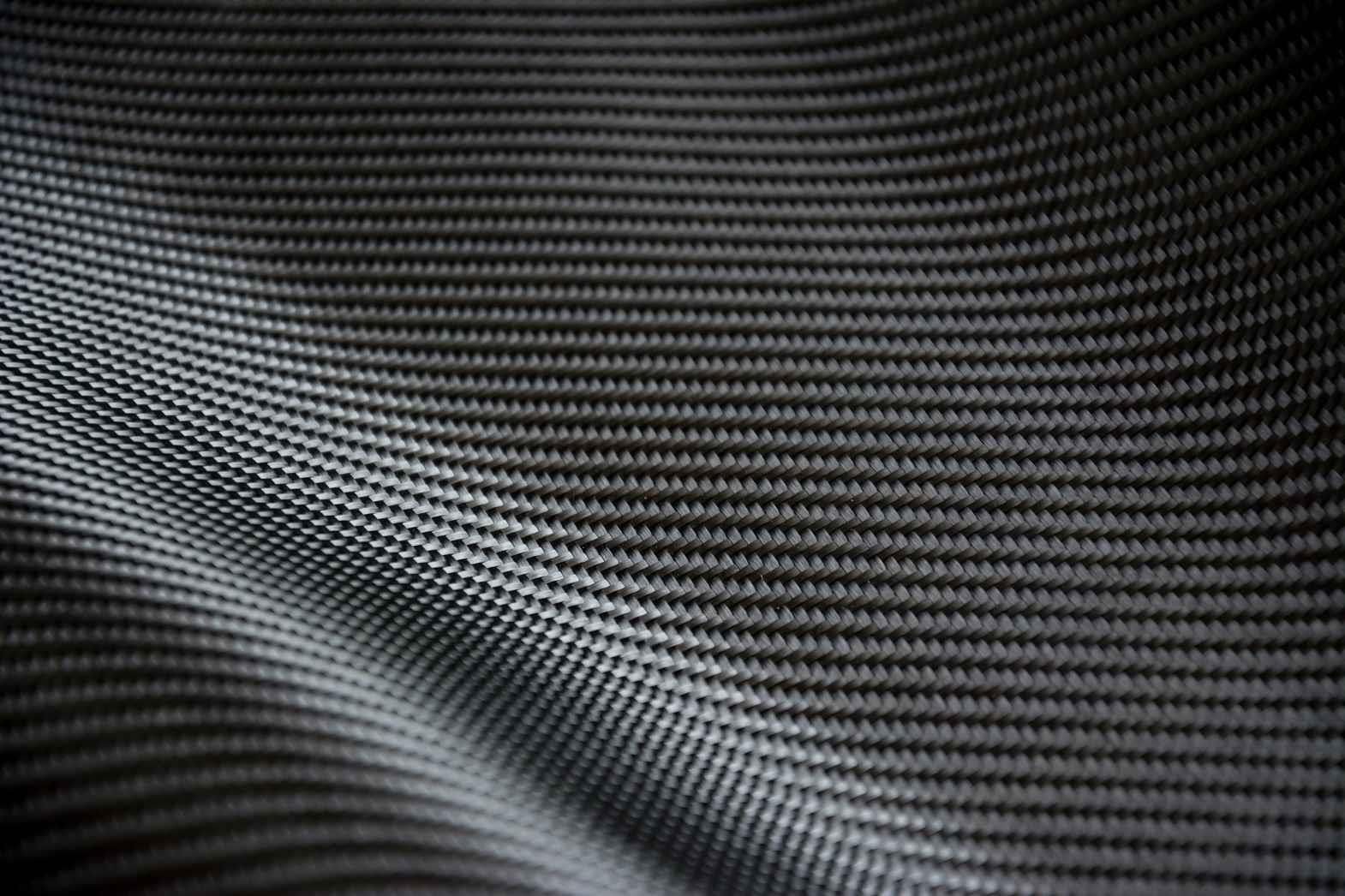Carbon fiber is a high-tensile fiber or whisker made by heating rayon or polyacrylonitrile fibers or petroleum residues to appropriate temperatures. Fibers may be 7 to 8 microns in diameter and are more than 90% carbonized.
These fibers are the stiffest and strongest reinforcing fibers for polymer composites, the most used after glass fibers. Made of pure carbon in the form of graphite, they have low density and a negative coefficient of longitudinal thermal expansion.
Carbon fibers are very expensive and can cause galvanic corrosion when in contact with metals. They are generally used together with epoxy in applications where high strength and stiffness are required, such as in race cars, automotive and space applications, and sporting equipment.
Depending on the orientation of the fiber, the carbon fiber composite can be stronger in a certain direction or equally strong in all directions. A small piece can withstand an impact of many tons and still deform minimally. The complex interwoven nature of the fiber makes it very difficult to break.
Characteristics/Properties of Carbon Fibers
- Physical strength, specific toughness, light weight.
- Good vibration damping, strength, and toughness.
- High dimensional stability, low coefficient of thermal expansion, and low abrasion.
- Electrical conductivity.
- Biological inertness and x-ray permeability.
- Fatigue resistance, self-lubrication, high damping.
- Electromagnetic properties.
- Chemical inertness, high corrosion resistance.
Based on modulus, strength, and final heat treatment temperature, carbon fibers can be classified into the following categories:
Based on carbon fiber properties.
Based on precursor fiber materials.
Based on final heat treatment temperature.
1. Based on carbon fiber properties, carbon fibers can be grouped into:
- Ultra-high-modulus, type UHM (modulus >450Gpa)
- High-modulus, type HM (modulus between 350-450Gpa)
- Intermediate-modulus, type IM (modulus between 200-350Gpa)
- Low modulus and high-tensile, type HT (modulus < 100Gpa, tensile strength > 3.0Gpa)
- Super high-tensile, type SHT (tensile strength > 4.5Gpa)
2. Based on precursor fiber materials, carbon fibers are classified into:
- PAN-based carbon fibers
- Pitch-based carbon fibers
- Mesosphere pitch-based carbon fibers
- Isotropic pitch-based carbon fibers
- Rayon-based carbon fibers
- Gas-phase-grown carbon fibers
3. Based on final heat treatment temperature, carbon fibers are classified into:
- High-heat-treatment carbon fibers (HTT), where final heat treatment temperature should be above 2000C and can be associated with high-modulus type fiber.
- Intermediate-heat-treatment carbon fibers (IHT), where final heat treatment temperature should be around or above 1500C and can be associated with high-strength type fiber.
- Low-heat-treatment carbon fibers, where final heat treatment temperatures not greater than 1000C. These are low modulus and low strength materials.
Application/Uses of Carbon Fiber
The two main applications of carbon fibers are in specialized technology, which includes aerospace and nuclear engineering, and in general engineering and transportation, which includes engineering components such as bearings, gears, cams, fan blades and automobile bodies. Recently, some new applications of carbon fibers have been found.
Such as rehabilitation of a bridge in building and construction industry, others include: decoration in automotive, marine, general aviation interiors, general entertainment and musical instruments and after-market transportation products. Conductivity in electronics technology provides additional new application.
Application Carbon Fiber is given as shortly:
- Aerospace, road and marine transport, sporting goods.
- Missiles, aircraft brakes, aerospace antenna and support structure, large telescopes, optical benches, waveguides for stable high-frequency (GHz) precision measurement frames.
- Audio equipment, loudspeakers for Hi-fi equipment, pickup arms, robot arms.
- Automobile hoods, novel tooling, casings and bases for electronic equipments, EMI and RF shielding, brushes.
- Medical applications in prostheses, surgery and x-ray equipment, implants, and tendon/ligament repair.
- Textile machinery, genera engineering.
- Chemical industry; nuclear field; valves, seals, and pump components in process plants.
- Large generator retaining rings, radiological equipment.
Carbon fibre is sometimes used in conjunction with fiberglass because of their similar manufacturing processes, an example of this would be the Corvette ZO6 where the front end is carbon fibre and the rear is fiberglass. Carbon fiber is however, far stronger and lighter than fiberglass.
Carbon fibre can be found in a wide range of performance vehicles including sports cars, superbikes, pedal bikes (where they are used to make frames), powerboats and it is often used in the tuning and customizing industry where attractive woven panels are left unpainted to 'show off' the material.
This article was originally published in Textile learner blog run by Mazharul Islam Kiron.








Comments